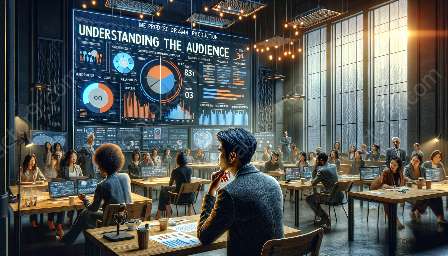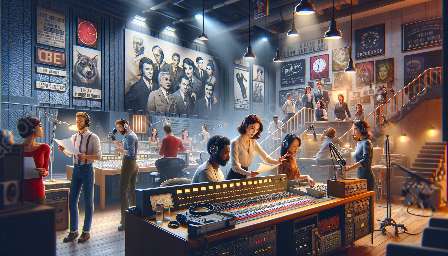Radio drama has long been an influential medium in entertainment, often employing various techniques to captivate diverse audience demographics. How these dramas engage with different demographics and coincide with multimedia convergence and production processes illuminates the dynamic nature of this art form.
The Impact of Radio Drama on Different Audience Demographics
Radio drama has the unique ability to engage with diverse audience demographics, regardless of age, gender, or cultural background. Through the power of storytelling and sound, radio dramas have been able to captivate listeners of all ages, from older generations who have fond memories of tuning in to classic radio shows, to younger audiences who embrace the retro charm and immersive storytelling. The versatility of radio drama ensures that it can resonate with a broad spectrum of listeners, making it an enduring form of entertainment.
Multimedia Convergence in Radio Drama
The advent of multimedia convergence has transformed the landscape of radio drama. With the integration of digital platforms and interactive media, radio dramas can now engage with audiences in innovative ways. Interactive websites, social media promotions, and podcasts have extended the reach of radio dramas, allowing for greater accessibility and audience engagement. The seamless convergence of multimedia has enabled radio dramas to adapt to changing audience preferences and consumption habits, ensuring the continued relevance of this art form in the digital age.
Radio Drama Production – Crafting Engaging Narratives
Behind the scenes, the production of radio drama plays a pivotal role in shaping narratives that resonate with diverse audience demographics. From scriptwriting and voice casting to sound design and music composition, every aspect of production aims to create compelling stories that connect with different listener groups. The collaborative efforts of writers, directors, producers, and actors contribute to the dynamic nature of radio drama, ensuring that each production reflects the diversity of its audience.
Adapting Radio Drama for Modern Audiences
As audience demographics and preferences continue to evolve, radio dramas have adapted to cater to modern sensibilities while retaining their timeless allure. By addressing contemporary themes and social issues, radio dramas remain relevant to diverse audiences, fostering meaningful connections through the power of storytelling. The evolution of radio drama in response to shifting audience dynamics exemplifies its resilience and enduring appeal.
Conclusion
Radio drama stands as a testament to the art of storytelling, captivating audiences across generations and demographics. Its convergence with multimedia platforms and commitment to engaging productions underscores its ability to resonate with diverse listener groups. As radio drama continues to evolve, its engagement with different audience demographics ensures its continued relevance in the ever-changing landscape of entertainment.






















